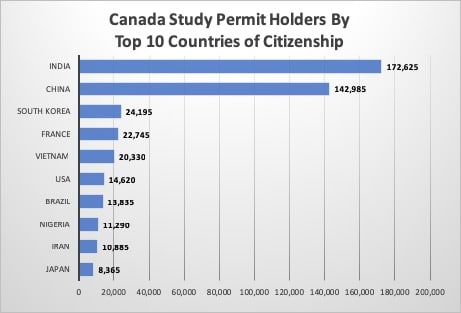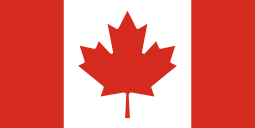Study In Canada: Guide for International Students
Canada is home to 21 of the world’s top 500 universities and 32 in the top 1,000. In 2018, Canada was home to 572,415 study permit holders. In 2021, Goreto and its associate Company have guided hundreds of students to find the best college, program, and study permit in Canada.
It offers some of the world’s best study programs and is home to some of the world’s leading research facilities and academic institutions.
If studying abroad is your plan, Canada should be at the top of your list. Read ahead for a step-by-step guide to applying for a Canada Study Permit.

Do you qualify to study in Canada? Answer online Free Study Questionnaire?
Step 1: Understand the Requirements
Successfully applying to a Canadian education institution requires an understanding of different requirements for schools and the courses they offer. Goreto has a team of experts in Canada and Kathmandu, We have been helping hundreds of students to get the best universities and Colleges, Programs in Canada.
Candidates also need to conduct a careful analysis of the rules and regulations applicable to the study permit application process. Only recognized schools and periods of approved study will be meaningful.
Ideally, you should start planning for your Canadian study permit at least a year in advance. Common requirements for all universities and institutions include an updated passport, proficiency in either English or French along with proof of passing prescribed language tests with minimum grades/bands, and proof that you can finance your study as well as the cost of living in the country.
Of course, requirements may vary between provinces, which is why this step must be performed in a careful and systematic manner.
Step 2: Choose your Course and Institution
The first step towards choosing an institution is to ascertain its status as a Designated Learning Institution. Only DLIs can admit foreign students.
You will be required to finalize a specific major course when applying to study in Canada. The Canadian academic setup is flexible towards switching courses, although it is best to compare your options beforehand and choose a major that you are truly interested in pursuing.
Step 3: Take the Language Proficiency Test
In order to successfully gain entry into Canada, every international student will have to prove proficiency in English or French. IELTS is the preferred test for proficiency in English, with some institutions also accepting the Cambridge English: Advanced or TOEFL exam score.
For French, you can opt for DALF, DELF, or TCF, although the TEF exam is the most common option.
Choose the test, pay the fee, and book your dates well in advance. Of course, you will have to brush up on your language skills to ensure your application does not get rejected.
Step 4: Apply to Universities
Now it is time to contact your shortlist of universities, obtain their application packs, and submit them well in advance. Having the choice of applying to a dozen universities can be advantageous but you will have to consider the application fee, which varies from $100 to $250.
Do not apply at random. Compare your options, identify your preferred course and institution, and select one or two alternatives as backups.
Be careful when filling in the application form and make sure you provide accurate information backed with documentary evidence. Once this is done, it is time to face the excruciating wait until you receive your acceptance. Once you confirm your interest, the university will send an acceptance letter, which plays a significant role in the formalities ahead.
Step 5: Apply for a Study Permit
Now that you have an institution ready to admit you, it is time to apply for the Canada Study Permit. You can apply online or visit your local visa application center. Your application must be accompanied by the acceptance letter received in the previous step, your passport, and documentary proof that you have adequate finances to study in Canada.
If you have applied to an institution in the province of Quebec, then you will also receive, along with the acceptance letter, a “Certificat d’acceptation du Québec” (CAQ). Make sure you include this document in your study permit application.
Step 6: Travel Time
Once the application has been processed and an interview, if required, has been conducted, the immigration officer will decide upon your study permit application. If accepted, it is now time to start planning your travel to Canada.
Your permit will have a start date, which is the date from which the permit comes into force. Keep in mind that you won’t be permitted to enter Canada before this date. Plan your travel accordingly.
Step 7: Study Time
The immigration officer will verify your permit and other documents at the port of entry before allowing you to enter Canada. This is the final step of the immigration formalities and you can now focus on commencing your journey as an international student in Canada.
What Happens After Your Studies Are Completed?
Canada’s federal government covets international graduates as ideal new permanent residents.
They are young, have knowledge of the culture, are proficient in languages, have Canadian qualifications, and often work experience.
After graduation, Canada’s Post-Graduation Work Permit allows students to begin their careers here.
Recent changes to the Express Entry selection system have made it easier for international students to make the transition to permanent residence.
There are also multiple provincial immigration streams aimed specifically at international students.



